A rainbow of local mushrooms! Photos by Maria Marrow
###
The rainy season is upon us, and although some people are surely not excited about it, for the fungi-obsessed folks in our community it means this is prime mushroom foraging season! And with the popularity of mushroom collecting in Humboldt County, it seemed like now would be a good time to talk about how to properly go about picking our fungi friends.
Maria Morrow, local mycology expert and board president for the Humboldt Bay Mycological Society (HBMS), offered some of her advice during an interview with the Outpost, on what things you should be paying attention to, how to be respectful and, most importantly, how to not die when out collecting mushrooms in our area.
“We have hundreds of mushroom species up here,” Morrow said. “So it’s a really wonderful diversity. We’ve got a huge diversity of edible stuff.”
When it comes to safely and respectfully gathering mushrooms, the first thing Morrow wanted to advise is to be aware of what property you are on and the laws/ rules that apply to that piece of land. There are many places, including state and national parks, where collecting mushrooms is illegal and other forest lands where it is allowed, but there are limits on the quantity of mushrooms you collect.
“Around here it’s really difficult to find a place to go because there’s a lot of different land ownership and each of those different ownerships is going to have different rules,” Morrow said. “So you kind of have to call the agency who oversees the place before going there, to see what the rules and regulations are.”
Morrow recommends that before you go out somewhere to gather mushrooms, that you first check this interactive land ownership map. Once you know who owns the land you’re going to be on, you can find that agency’s specific rules on mushroom collecting.
Though the rules and regulations may vary, general mushrooming etiquette would ask that you not pick more than what you need, and leave some for other people. You should also be respectful of the environment and don’t trample or destroy other surrounding wildlife.
What mushrooms will be popping up depends on the time of year, but a few common and popular edibles around our area include chanterelles, lobster mushrooms and hedgehogs, which tend to come out earlier in the fall. As we get later into the rainy season, people are finding king boletes and matsutakes, among other things. There are also a lot of other edible mushrooms that are abundant, but not quite so popular for gathering, Morrow said. One she really likes is midnight entoloma.
But with hundreds of mushroom species in our area, some that look similar to each other, how do you know for sure that you’ve collected the right one and not something that could make you sick? Well, if you’re new to the mushrooming game, Morrow said that there are some mushroom genera that are a little more foolproof for beginners, and some that you should probably avoid altogether.
Chanterelles are a great place to start, Morrow said, because they are pretty distinct – usually yellow or orange, with a funnel-like shape and a rounded, forked cap. There are a couple of other mushrooms that look like them — the false chanterelle is a common one — but none of the lookalikes are poisonous. The false chanterelle is not really tasty like a real chanterelle, and it could potentially cause some indigestion, but it’s not going to kill you, Marrow said.
Hedgehogs are another good option that don’t have a lot of close lookalikes, as are laetiporus, commonly called “chicken of the woods.” Chicken of the woods is bright orange and grows like a shelf out of dying trees and logs, making it pretty difficult to mistake. “I don’t think anything else really looks like that,” Marrow said.
Above: a chanterelle. Below: a false chanterelle
When it comes to mushrooms to generally avoid, Marrow said to stay away from lepiotas, which are all toxic. Another genus to avoid if you’re still learning is amanita. This is probably the most common genus that people misidentify, Marrow said, because there are many types and some of them are edible, while others are incredibly toxic. The effects of ingesting different amanitas can range from hallucinations, to a coma, to death. Marrow discourages newbies from eating any mushrooms from that group, unless they’re gathering with someone who really knows their stuff.
Luckily, there are lots of wonderful resources available to help you identify your mushrooms. Morrow recommends starting with a mushroom field guide (you can find several suggested titles here). You can also post photos to online forums, such as iNaturalist, or Facebook groups like Mushroom Hunters of Northern California or Mushrooms of Humboldt County, where more experienced folks can help you identify your mushrooms. If you’re feeling like this might be your new hobby, then you should also consider joining a local club like HBMS or Cal Poly Humboldt’s Mycology Club.
Morrow’s biggest piece of advice for new collectors is a common mushrooming adage, “pick many before you eat any.” Start picking and getting familiar with mushrooms – what they look like, feel like, smell like. After some time, you will be more comfortable identifying edible mushrooms. Morrow also recommends going out mushroom collecting in groups, because different people will notice different details about the fungi.
Whether you’re an expert, still learning or just starting out, you’ll also want to check out HBMS’s annual Mushroom Fair, which is happening on Nov. 19. There will be lectures and workshops, including an introduction to mushroom identification given by Portland-based mycology expert Leah Bendlin. The fair will also have a community ID table, where you can bring in your mushrooms to have them identified by an expert! You can also bring in your mushrooms on the day before the fair to have them displayed during the event.
The Mushroom Fair will be held on Sunday, Nov. 19 from 11 a.m. to 4 p.m. at the Arcata Community Center – 321 Martin Luther King Parkway. The fair has been a popular local event for decades and this year, Marrow said, they are adding food trucks to the party. Marrow also said that because the fair is so popular, the City is recommending people park off-site, because the parking lot will likely fill up. Marrow also added that a lot of newer folks have been joining HBMS and that this year’s fair will be more geared towards the mushroom-curious.
“We’re trying to do more stuff that’s more friendly to getting people involved, because a lot of our board members retired and a lot of our original mushroom community is kind of aging out a little bit,” Morrow said. “We have so many new people and our content is changing to support those new people.”
The king! King bolete
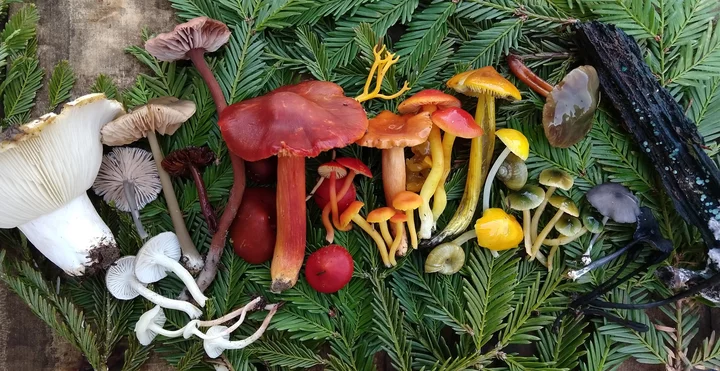
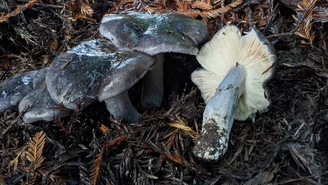
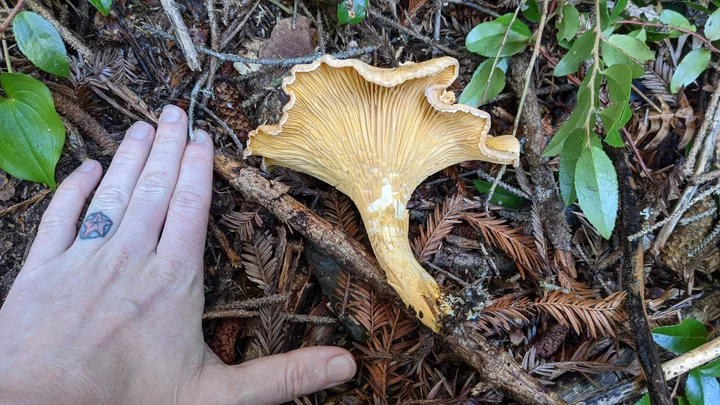
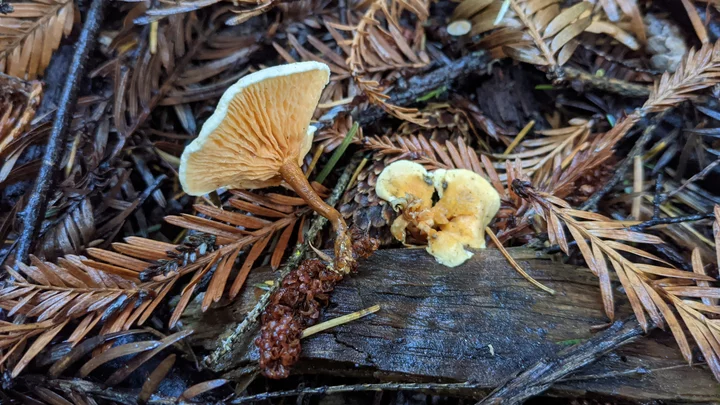
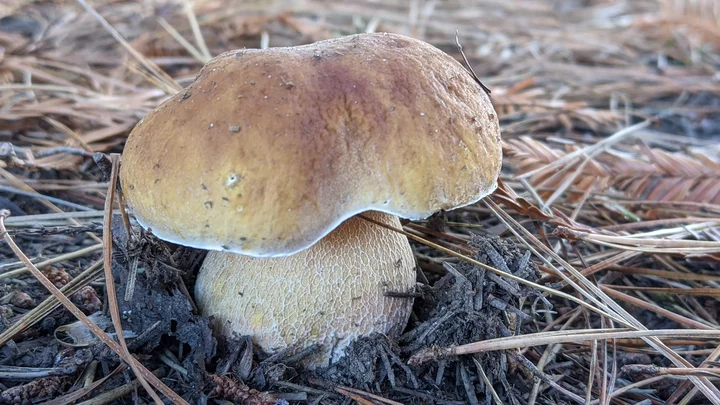
CLICK TO MANAGE